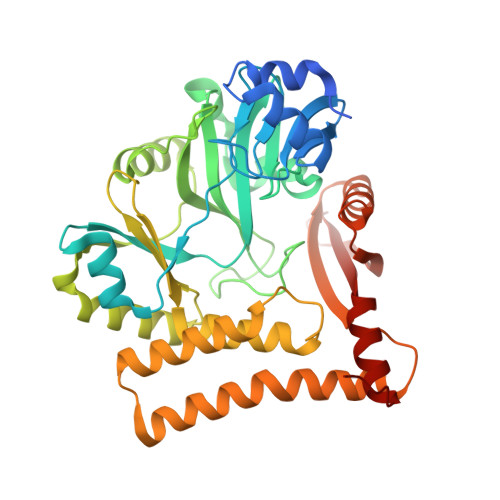Characterisation and engineering of a thermophilic RNA ligase from Palaeococcus pacificus.
Rousseau, M., Oulavallickal, T., Williamson, A., Arcus, V., Patrick, W.M., Hicks, J.(2024) Nucleic Acids Res 52: 3924-3937
- PubMed: 38421610
- DOI: https://doi.org/10.1093/nar/gkae149
- Primary Citation of Related Structures:
8UCE, 8UCF, 8UCG, 8UCH, 8UCI - PubMed Abstract:
RNA ligases are important enzymes in molecular biology and are highly useful for the manipulation and analysis of nucleic acids, including adapter ligation in next-generation sequencing of microRNAs. Thermophilic RNA ligases belonging to the RNA ligase 3 family are gaining attention for their use in molecular biology, for example a thermophilic RNA ligase from Methanobacterium thermoautotrophicum is commercially available for the adenylation of nucleic acids. Here we extensively characterise a newly identified RNA ligase from the thermophilic archaeon Palaeococcus pacificus (PpaRnl). PpaRnl exhibited significant substrate adenylation activity but low ligation activity across a range of oligonucleotide substrates. Mutation of Lys92 in motif I to alanine, resulted in an enzyme that lacked adenylation activity, but demonstrated improved ligation activity with pre-adenylated substrates (ATP-independent ligation). Subsequent structural characterisation revealed that in this mutant enzyme Lys238 was found in two alternate positions for coordination of the phosphate tail of ATP. In contrast mutation of Lys238 in motif V to glycine via structure-guided engineering enhanced ATP-dependent ligation activity via an arginine residue compensating for the absence of Lys238. Ligation activity for both mutations was higher than the wild-type, with activity observed across a range of oligonucleotide substrates with varying sequence and secondary structure.
- School of Science, The University of Waikato, Hamilton 3216, New Zealand.
Organizational Affiliation:



















